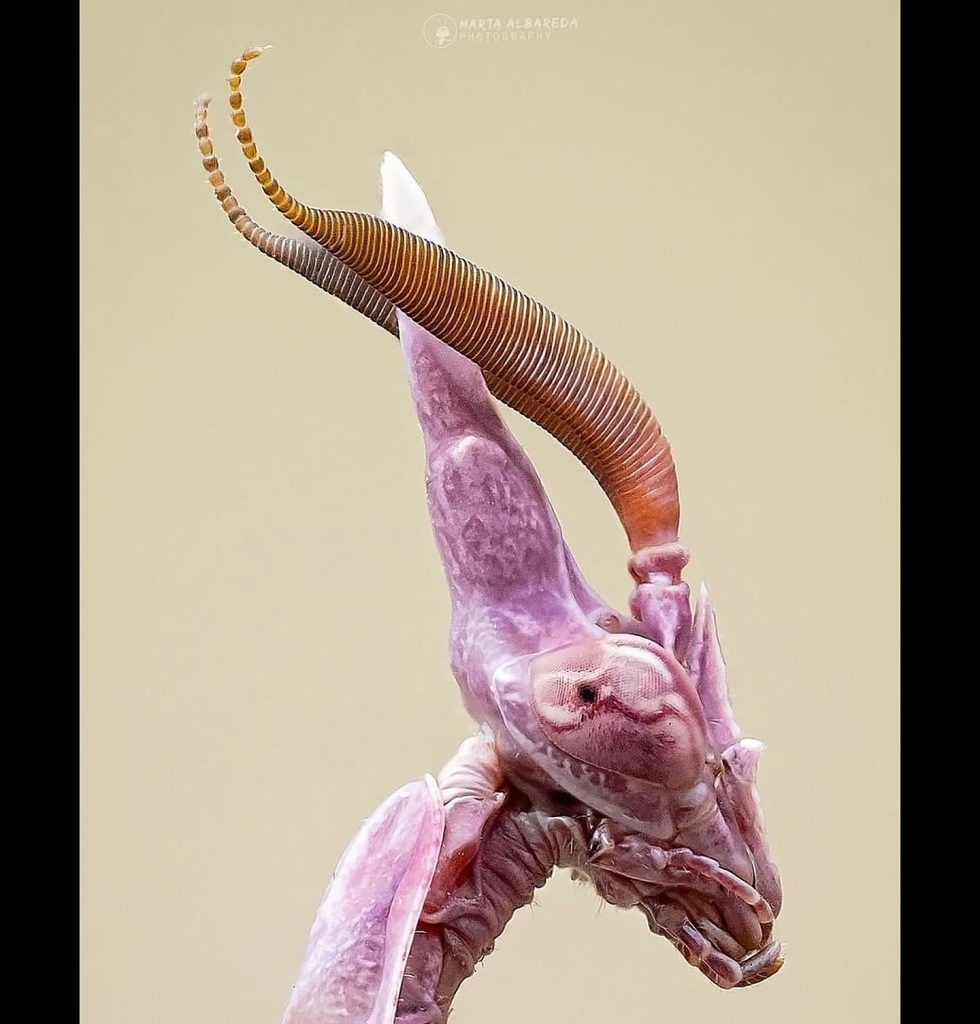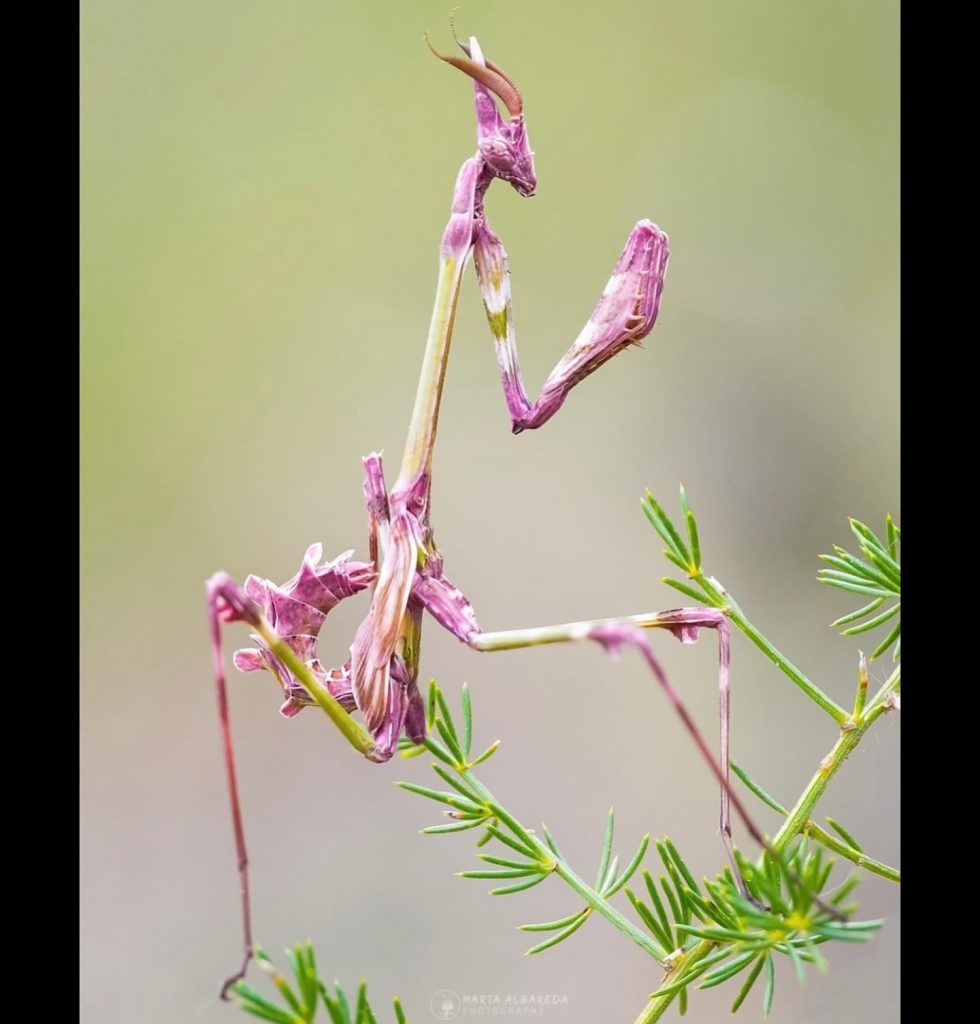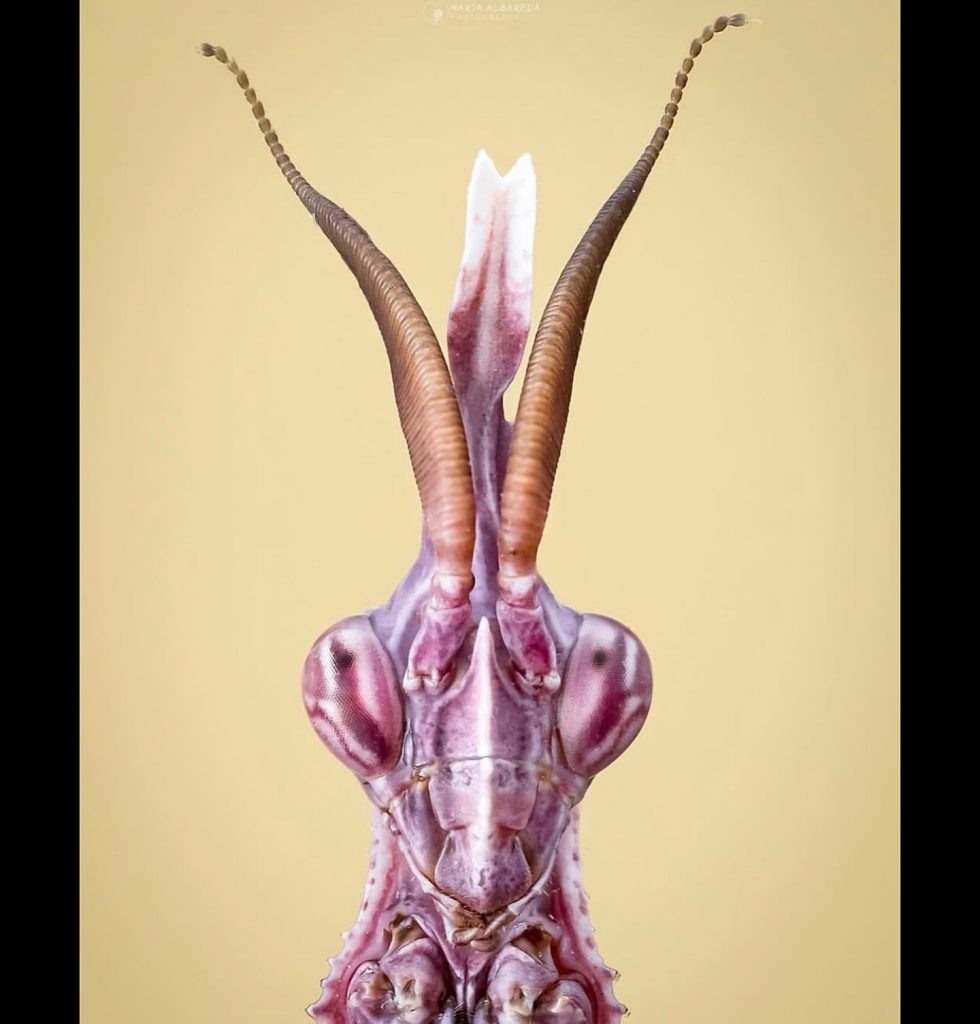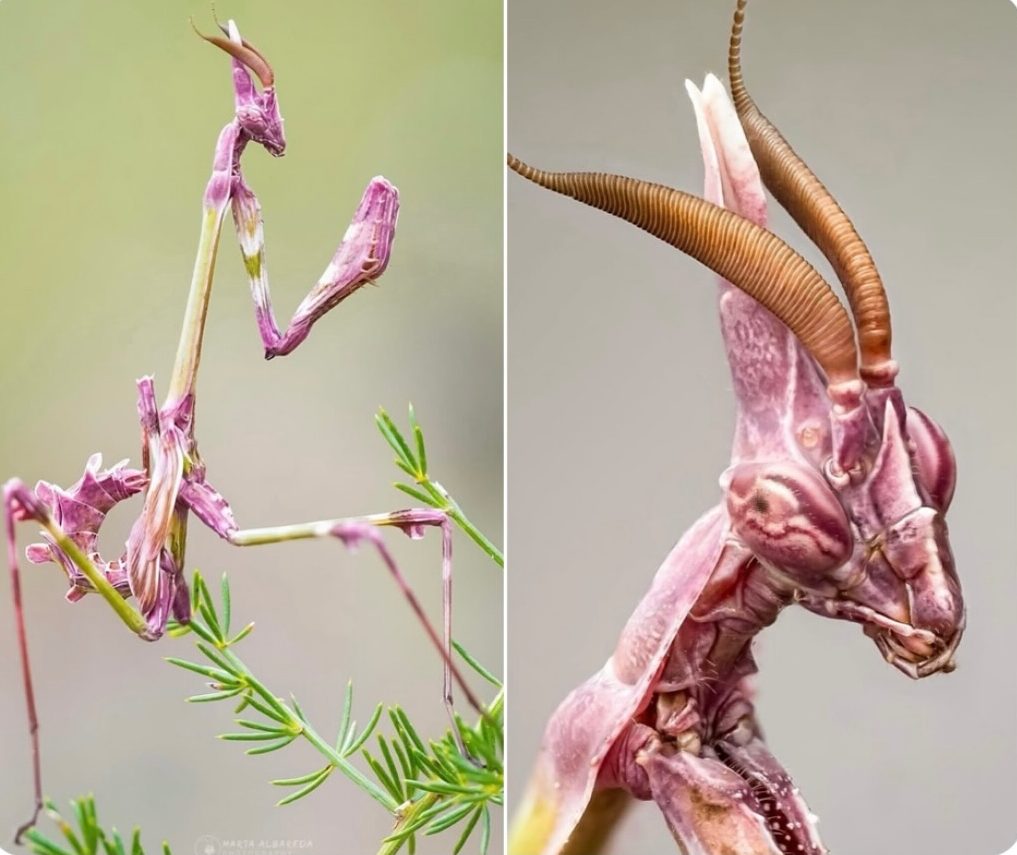A Flower, a Predator, or a Creature from Another World?
If you ever stumbled across the pink Empusa mantis in the wild, you might think you’re seeing a fantasy creature—or something that’s not even from Earth. With its long, delicate limbs, horns curling from its head like those of a mythical beast, and soft pink color that looks painted by hand, this mantis is truly a wonder of nature. It doesn’t just look like part of a flower—it looks like it belongs in a dream.

Found mostly in the warmer parts of southern Europe, North Africa, and stretches of western Asia, the Empusa mantis belongs to a genus of insects that are both fierce and fragile. Their long, spindly bodies are adorned with leaf-like decorations, and their heads are narrow, angular, and alien-looking—especially when captured in close-up by macro photographers. But what makes this particular pink variety so special isn’t just the way it looks. It’s how rare it is to see.
Nature photographers wait years for the perfect shot. Many spend hours crawling through brush, scanning petals, and hoping that just once, the light will hit this creature just right. When it does, the result is breathtaking. A splash of soft pink—like bubblegum, or rose petals—sits perfectly camouflaged among leaves. The mantis stands frozen, blending into the scenery with elegance and purpose, as if it’s part of the plant itself. And yet, it is a hunter. A patient one.
Beauty with a Bite: Inside the World of the Pink Empusa
Don’t let the delicate colors fool you. Like all mantises, the Empusa is a carnivore. It sits completely still, legs ready, eyes focused, until a small fly, bee, or cricket makes the mistake of getting too close. And then—snap. With lightning speed, the mantis strikes. Its front legs, lined with tiny spikes, close like a trap around the prey. No second chances.
What’s fascinating is that this blend of grace and aggression is what makes the Empusa so captivating. Unlike its more famous cousin, the green praying mantis, the Empusa seems softer, slower, almost poetic. But in truth, it’s just as deadly, just quieter in its method.
The males are the ones with those wild, feathery antennae. These aren’t just for show—they help the male pick up pheromones from far away, often tracking females across large distances. Their bodies are thin like dry twigs. Their movement is gentle, ghost-like, which makes spotting one in the wild even harder.

Some say the pink coloring is due to environment and light conditions. Others think it might be tied to age, region, or even diet. Whatever the cause, the pink form is exceptionally rare—and fleeting. It’s not a morph that sticks around for long. In some cases, mantises may begin pinkish and turn green or brown over time as they mature and molt. That’s what makes these photographs so precious: they capture a moment of nature’s magic before it vanishes.
One viral photo set of the pink Empusa recently made its way around social media, and the reactions were all over the place. Some people thought it was fake, a CGI model, or a 3D-printed figurine. Others compared it to creatures from sci-fi or fantasy games—something out of Avatar, Star Wars, or The Witcher. One user on Reddit wrote:
“This isn’t a bug. This is art.”
And honestly, they’re not wrong.

In a world overwhelmed by screens and simulations, seeing something this extraordinary in real life reminds us how wild the real planet still is. We don’t have to look to other worlds for strange, surreal beauty—it’s already here, hidden among the leaves.
And the best part? The mantis doesn’t care that we’re amazed. It doesn’t try to impress. It just exists. Perfectly evolved, beautifully camouflaged, doing its job as a predator in the ecosystem, unaware that it’s melting the internet with every close-up.
These are the creatures that make nature feel alive again. When you see something like the pink Empusa mantis, you suddenly remember how much wonder still exists in the small corners of the earth. It’s a reminder to slow down, to look closely, and to keep your eyes open for surprises hiding in plain sight.

Daniel Reed is a curious mind with a passion for breaking down how the world works. With a background in mechanical engineering and digital media, he turns complex ideas into easy-to-understand articles that entertain and inform. From vintage tools and modern tech to viral internet debates and life hacks, Daniel is always on the hunt for the “why” behind the everyday. His goal is simple: make learning feel like scrolling through your favorite feed — addictive, surprising, and fun.
